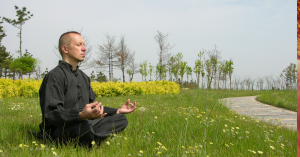The Tao Te Ching, attributed to the ancient Chinese philosopher Lao Tzu, is a timeless masterpiece that delves into the profound philosophy of Taoism. Comprising 81 short chapters, this ancient text offers insights into the nature of existence, the concept of the Tao, and the principles that govern a harmonious life. In this blog post, we embark on a journey to explore the wisdom encapsulated within the pages of the Tao Te Ching.
Understanding the Tao:
At the core of the Tao Te Ching lies the concept of the Tao, often translated as “the way.” Lao Tzu presents the Tao as the ultimate, formless source of everything in the universe. It is the underlying principle that governs the natural order of life.
Describing the Tao is a challenging task, as Lao Tzu emphasizes its ineffability and transcendent nature. Yet, the sage invites readers to align themselves with the Tao, recognizing its pervasive influence in both the seen and unseen aspects of life.

The best translation of Tao Te Ching
- Stephen Mitchell (1988):
- Mitchell’s translation is popular for its poetic and accessible language. It aims to capture the essence of the text in a way that is both readable and spiritually profound.
- D.C. Lau (1963):
- Lau’s translation is often recommended for its scholarly accuracy. It provides a straightforward interpretation that is faithful to the original Chinese text, making it suitable for those seeking a more literal understanding.
- James Legge (1891):
- One of the earliest English translations, Legge’s version, is valued for its historical significance. While the language may feel a bit archaic, it remains a respected translation that influenced later interpretations.
- Ursula K. Le Guin (1997):
- Le Guin’s rendition is known for its literary quality and sensitivity to the philosophical nuances of the text. It offers a unique and accessible perspective on the Tao Te Ching.
- Red Pine (2009):
- Red Pine’s translation is praised for its clarity and insight. He combines linguistic accuracy with a deep understanding of the Taoist philosophy, providing a comprehensive reading experience.
- Arthur Waley (1934):
- Waley’s translation is celebrated for its poetic and elegant style. Although not as literal as some other translations, it captures the spirit and beauty of the Tao Te Ching.
The Art of Wu Wei:
A prominent theme in the Tao Te Ching is the principle of Wu Wei, often translated as “non-action” or “effortless action.” Contrary to the Western notion of inactivity, Wu Wei suggests a harmonious alignment with the natural flow of the Tao.
It encourages individuals to act without attachment, letting go of personal desires and ego-driven motives. Through Wu Wei, Lao Tzu advocates for a life where actions arise spontaneously, guided by an innate understanding of the Tao, rather than being driven by external influences.
Embracing Simplicity:
Simplicity is extolled throughout the Tao Te Ching as a virtue that leads to true contentment and wisdom. Lao Tzu urges individuals to simplify their lives, shedding unnecessary complexities and distractions. By embracing simplicity, one can cultivate a deep connection with the Tao and experience the profound joy that comes from unburdening oneself from the trappings of materialism and excessive desires.
tao te ching book
- Tao Te Ching” by Stephen Mitchell:
- Stephen Mitchell’s translation is known for its poetic and accessible language. It provides a contemporary interpretation that captures the essence of the Tao Te Ching.
- “Tao Te Ching” by D.C. Lau:
- D.C. Lau’s translation is appreciated for its scholarly accuracy. It offers a more literal rendering of the original Chinese text, making it suitable for those seeking a faithful representation.
- “Tao Te Ching: A New English Version” by Ursula K. Le Guin:
- Ursula K. Le Guin’s translation is notable for its literary quality and sensitivity to the philosophical nuances of the text. It offers a fresh perspective on the Tao Te Ching.
- “Tao Te Ching” by James Legge:
- James Legge’s translation is one of the earliest English versions and is valued for its historical significance. It reflects the language of its time and provides insights into how the text was initially introduced to English-speaking audiences.
- “Tao Te Ching: A New Translation” by Red Pine (Bill Porter):
- Red Pine’s translation is praised for its clarity and insight. Combining linguistic accuracy with a deep understanding of Taoist philosophy, it offers a comprehensive reading experience.
The Paradoxes of Power:
Lao Tzu offers unique insights into the nature of power, challenging conventional notions. In the Tao Te Ching, strength is found in flexibility, and true leadership lies in humility. The sage advises rulers and individuals alike to lead by example, to yield like water rather than resist a rigid force.
Through these paradoxical teachings, Lao Tzu reveals a profound understanding of the interplay between opposites and the transformative power of embracing both the yin and yang aspects of existence.
Quotes from tao te Ching
- The Tao that can be told is not the eternal Tao; the name that can be named is not the eternal name.”
- Chapter 1
- “Simplicity, patience, and compassion. These three are your greatest treasures. Simple in actions and thoughts, you return to the source of being.”
- Chapter 67
- “Knowing others is wisdom; knowing yourself is enlightenment.”
- Chapter 33
- “The wise man is one who knows what he does not know.”
- Chapter 71
- “Act without expectation.”
- Chapter 2
- “The best fighter is never angry.”
- Chapter 68
- “He who conquers others is strong; he who conquers himself is mighty.”
- Chapter 33
- “To understand the limitations of things, desire them.”
- Chapter 1
- “The softest things in the world overcome the hardest things in the world.”
- Chapter 43
- “When I let go of what I am, I become what I might be.”
- Chapter 44
- “The more laws and order are made prominent, the more thieves and robbers there will be.”
- Chapter 57
- “Give evil nothing to oppose, and it will disappear by itself.”
- Chapter 60
- “In dwelling, live close to the ground. In thinking, keep to the simple.”
- Chapter 64
- “He who does not trust enough will not be trusted.”
- Chapter 17
- **”The Tao of heaven is to take from those who have too much and give to those who do not have enough.”
- Chapter 77
Conclusion:
As we conclude our exploration of the Tao Te Ching, we recognize the enduring relevance of its teachings in guiding individuals toward a balanced and harmonious life. Lao Tzu’s wisdom, though rooted in ancient Chinese philosophy, transcends cultural and temporal boundaries, offering timeless insights into the nature of existence and the pursuit of true fulfillment. In a world often characterized by complexity and haste, the Tao Te Ching stands as a beacon, inviting us to pause, reflect, and align ourselves with the eternal way.



